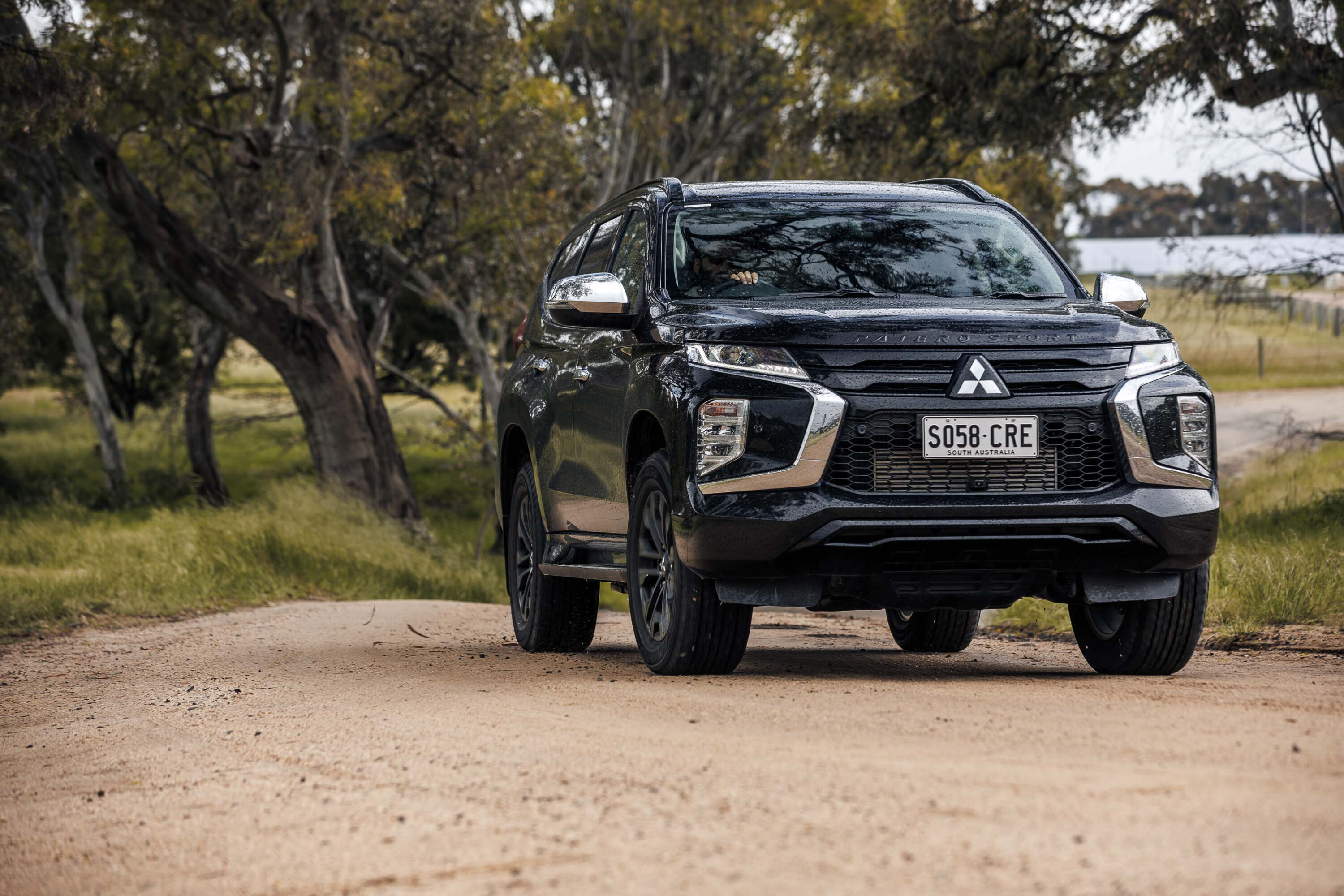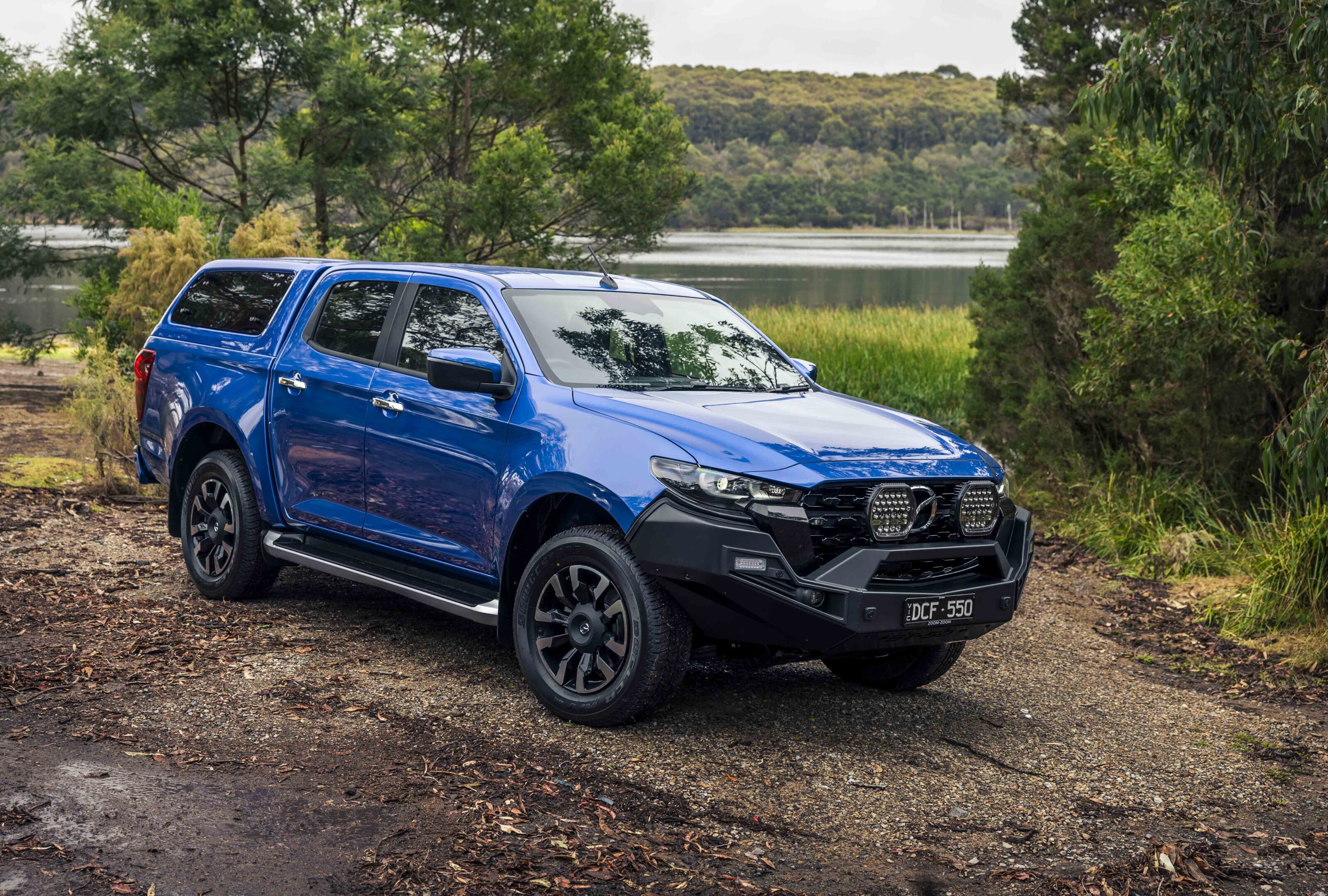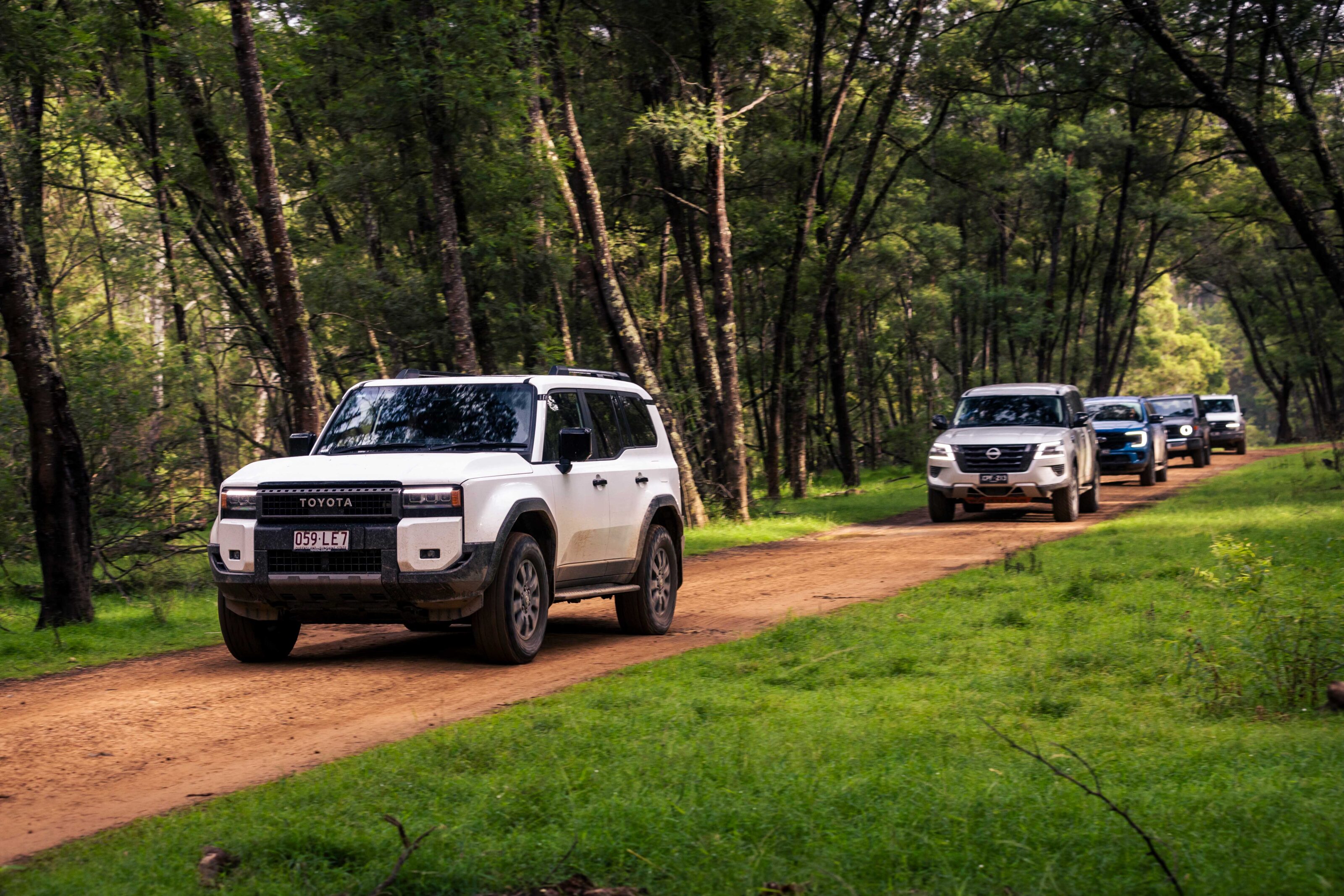Score breakdown
Things we like
- A simple, honest motor car
- Plenty of space inside
- Very effective off-road
- Impressive 10-year warranty
Not so much
- Engine not the most refined
- Can drive a bit like a truck
- Interior feels old
- Lacks some safety aids
The Mitsubishi Pajero Sport is a large SUV built on the same platform as the Triton dual-cab ute. That means it has tonnes of interior space, but also an old-school ladder chassis and solid axle rear suspension (which can make it feel a bit like a light truck).
On the upside is a 3100kg towing capacity and impressive off-road ability. Plus rock-solid reliability, backed by Mitsubishi’s industry-leading 10-year warranty.
While it comes crammed with modern features and equipment, the Pajero Sport is a dependable, somewhat no-frills vehicle that will get the job done for many hundreds of thousands of kilometres.
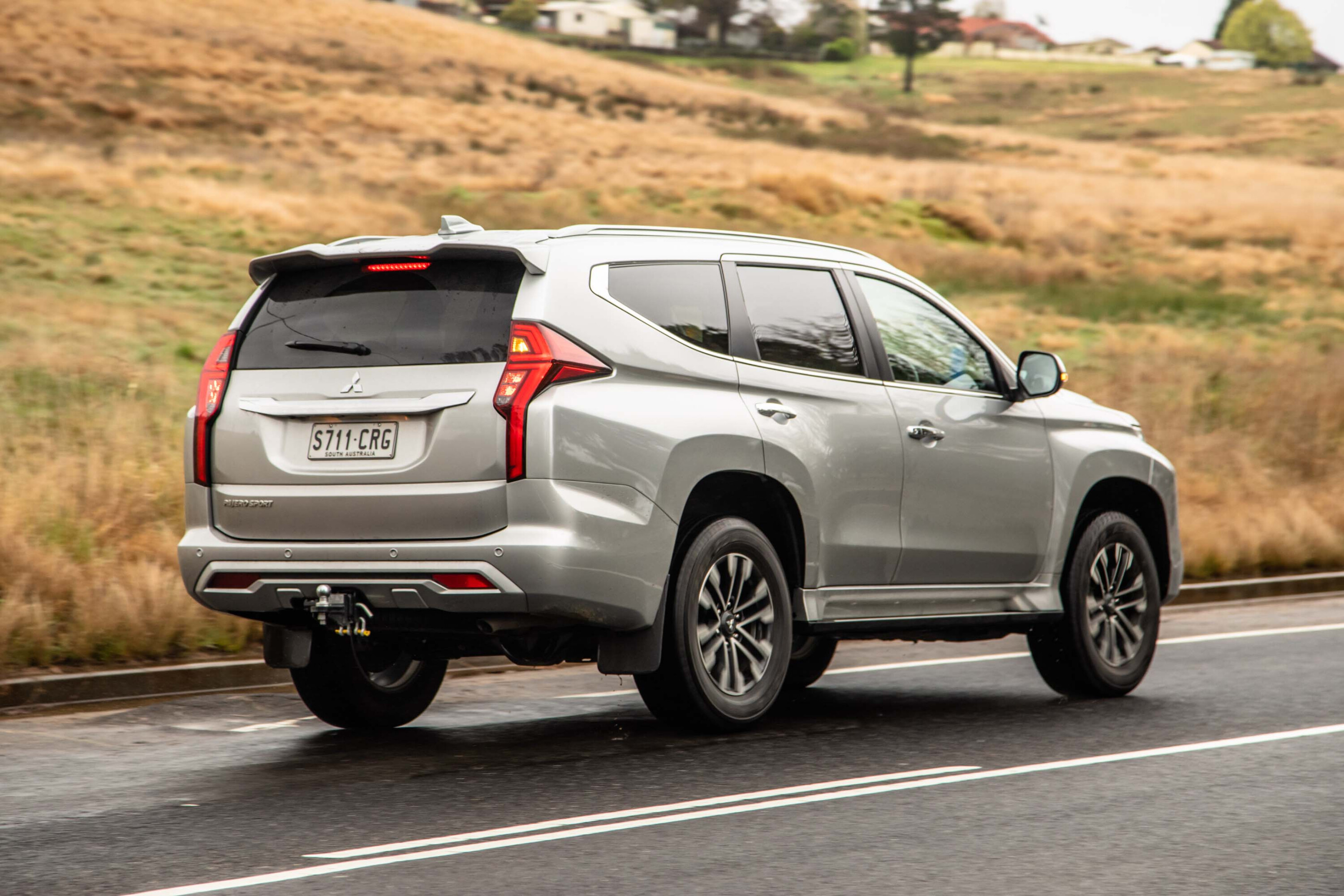
JUMP AHEAD
- Pricing
- Body styles
- Standard features
- Key features if you spend more
- Safety
- Comfort & practicality
- Boot space
- Driving experience
- Fuel economy
- Towing capacity
- Warranty & servicing
- Which version does 4X4 Australia recommend?
- Key rivals
- What might annoy me?
- What might I miss that similar cars have?
- Infotainment system
- Where does Mitsubishi make the Pajero Sport?
- Are there plans to update the Pajero Sport soon?
2024 Mitsubishi Pajero Sport pricing
| Model | Price |
|---|---|
| GLX 2WD | $44,940 |
| GLS 2WD | $50,190 |
| GLX 4WD | $49,940 |
| GLS 4WD | $55,190 |
| Exceed 4WD | $60,690 |
| GSR 4WD | $62,440 |
| GLS Deluxe Pack | an extra $1500 |
| Prices exclude on-road costs |
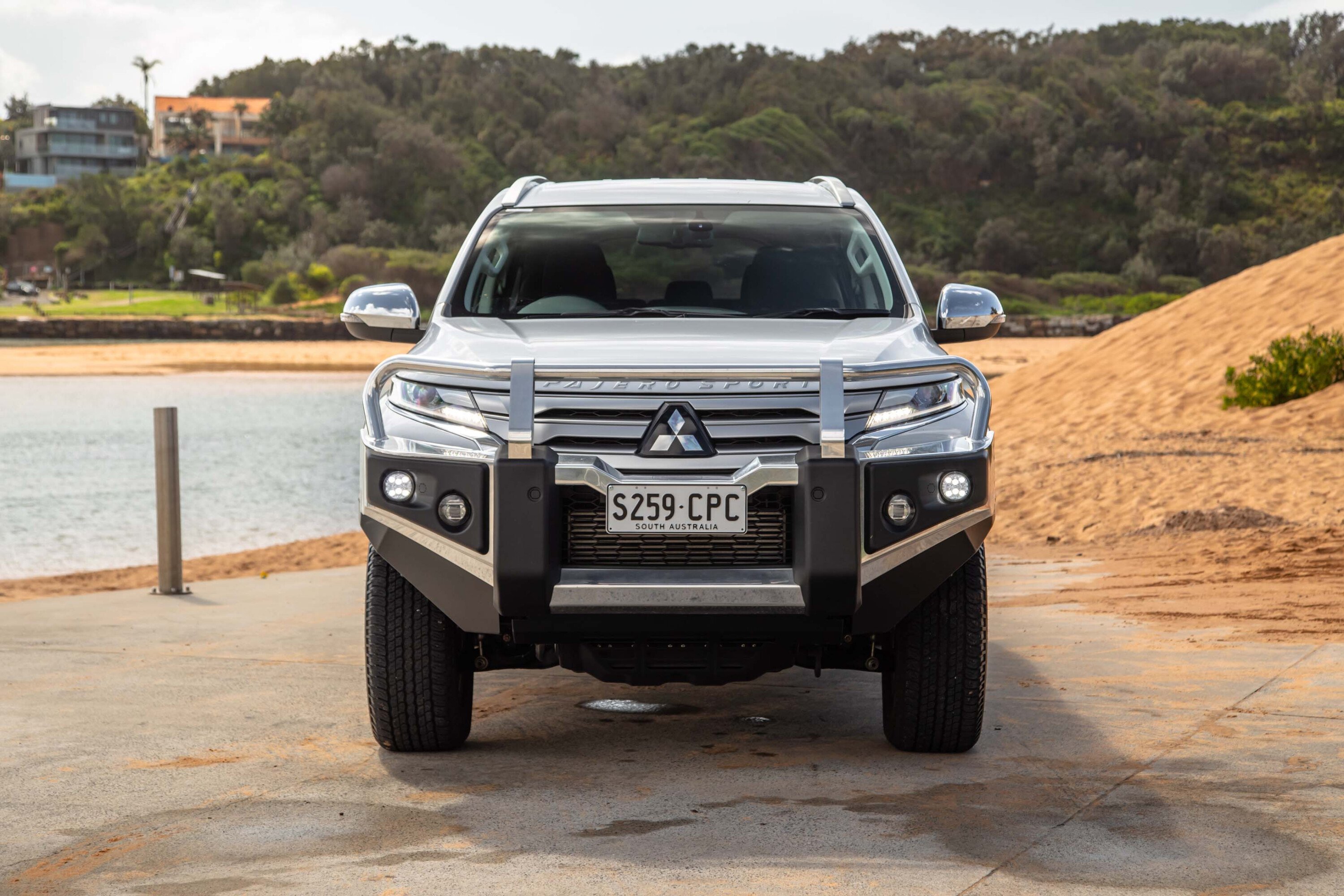
What body styles are available for the Mitsubishi Pajero Sport?
The Pajero Sport can only be had as a five-door SUV, in either five- or seven-seat configurations.
There are versions with rear-wheel drive and all-wheel drive, all using the same 133kW/430Nm 2.4-litre turbo-diesel four-cylinder engine and eight-speed automatic transmission. The Pajero Sport competes in Australia’s sub-$70K large SUV segment.
What features are standard in every Mitsubishi Pajero Sport?
The features listed below are standard in the entry-level GLX 2WD model and will appear in higher-grade models, unless replaced by more premium equivalent features.
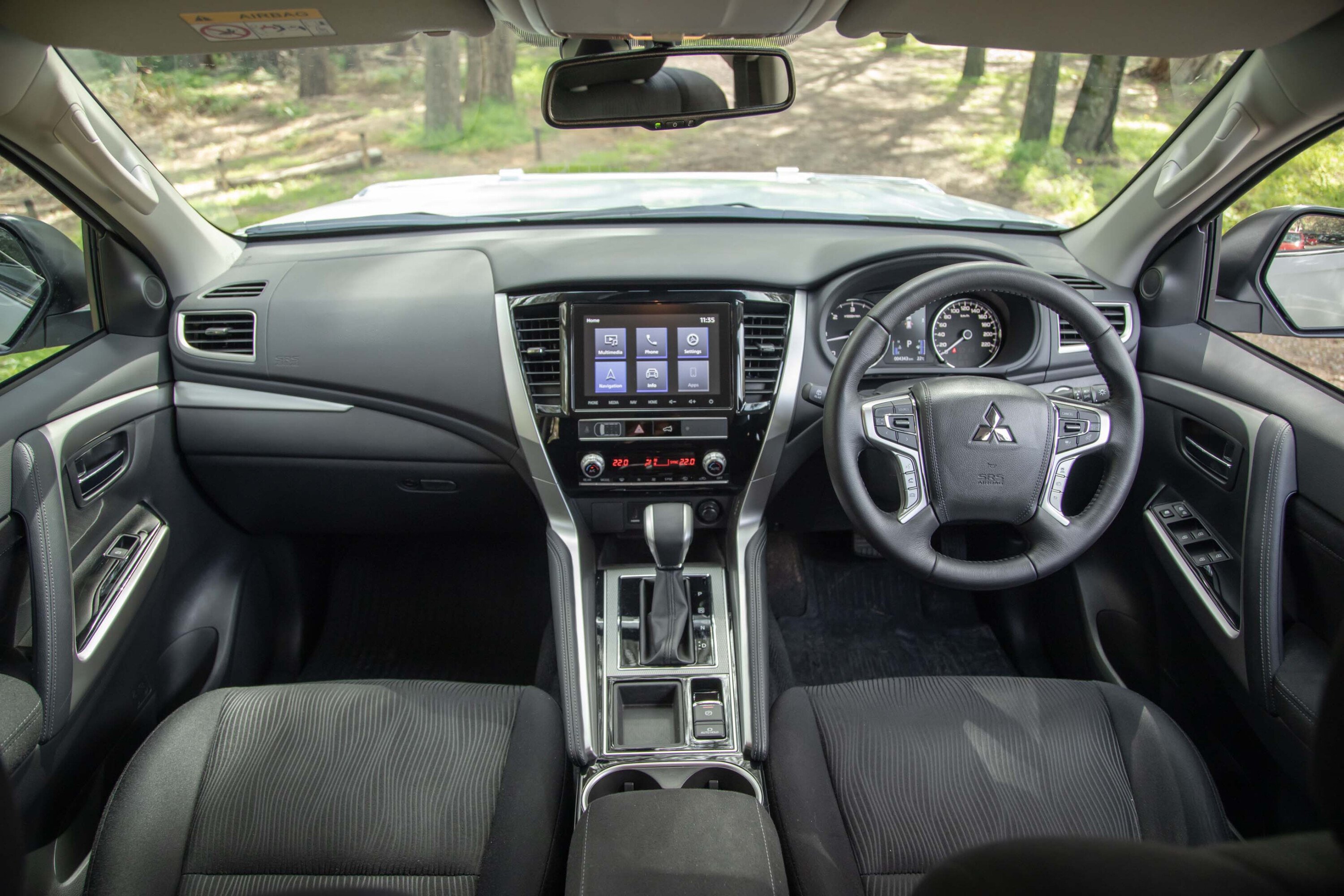
| 2024 Mitsubishi Pajero Sport standard features | |
|---|---|
| 18-inch wheels | Electric adjustable and folding side mirrors |
| 2 x USB Input front; 1 x USB power supply rear | Electric park brake |
| 3 x 12v accessory sockets | Keyless entry with engine start button |
| 4 speakers | LED headlights |
| 8.0-inch central touchscreen infotainment | Rear parking sensors |
| Adaptive cruise control | Reversing camera |
| Android Auto & Apple CarPlay | Roof rails |
| Brake auto-hold function | Second-row centre armrest with cup-holders |
| Cloth upholstery | Second-row seat recline adjustment |
| Daytime running lights | Second-row split folding function |
| Digital (DAB+) radio | Side steps |
| Driveru2019s seat lumbar adjustment | Speed-sensitive intermittent windscreen wipers |
What key features do I get if I spend more?
The Pajero Sport range is surprisingly uniform, with all variants using the same 133kW/430Nm turbo-diesel powertrain, all equipped with 18-inch wheels and all featuring the same 8.0-inch central touchscreen.
Opening the range is the GLX spec that comes in a five-seat configuration with rear-wheel-drive only. It has manually-adjustable cloth seats and misses out on some safety equipment compared to upper-grade models, such as blind-spot monitoring, rear cross-traffic alert, dusk-sensing headlights and lane-keep assist.
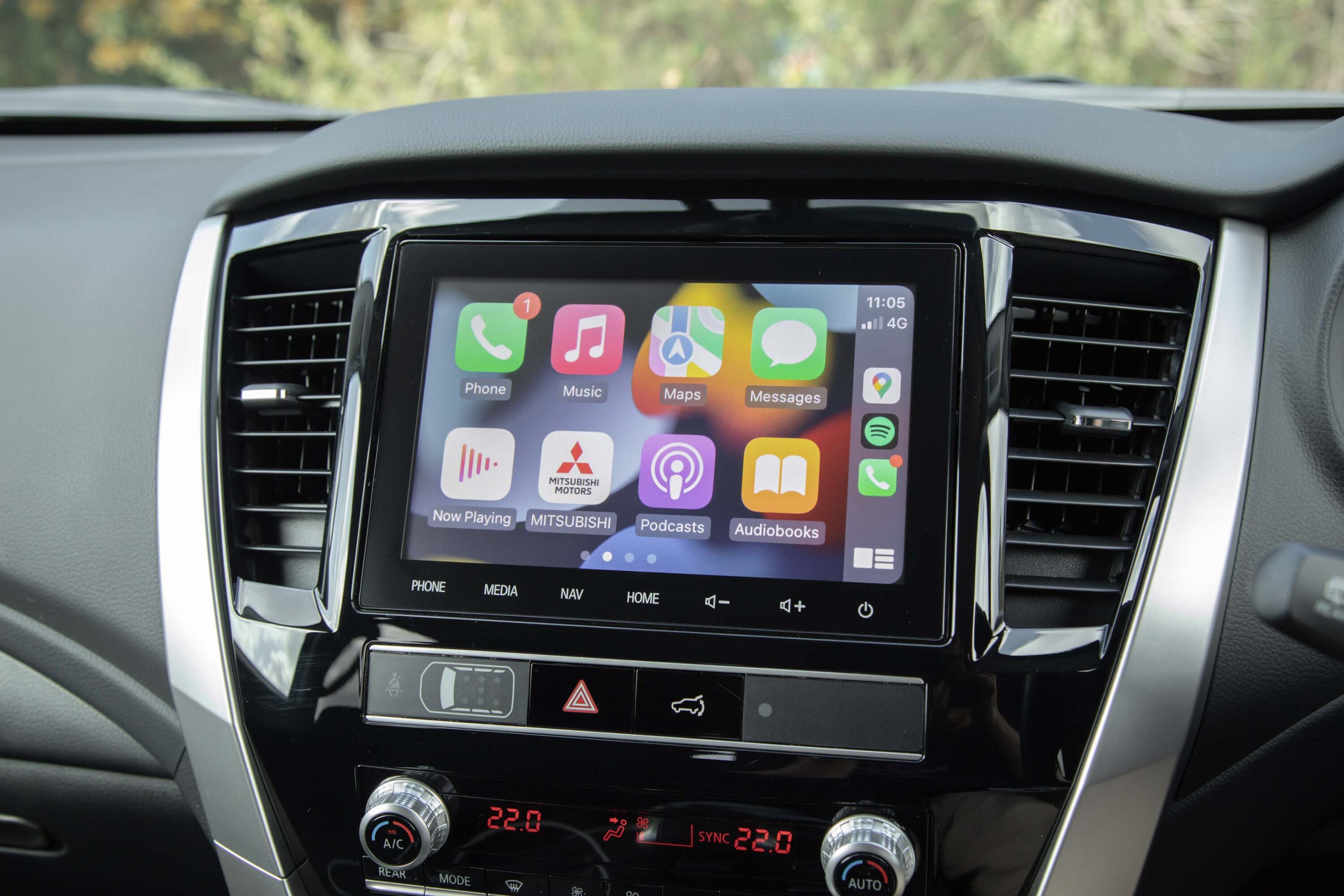
As you move up the range, more and more goodies are added, effectively topping out with the Exceed, of which the main party trick is its swanky 8.0-inch digital instrument display (which goes a long way to modernising an otherwise old interior).
Most of what you get for spending extra on the GSR over an Exceed is the unique blacked-out exterior look.
Upgrading to a GLS gets you those features plus:
| 2024 Mitsubishi Pajero Sport GLS features | |
|---|---|
| Auto-dimming rear view mirror | Satellite navigation |
| Rear spoiler | Third-row seat split folding function |
| Privacy glass | Third-row seat recline adjustment |
| Powered tailgate | Rear floor storage box |
| Tyre pressure monitoring system | Automatic dusk-sensing headlights |
| 6 speakers | Automatic rain-sensing wipers |
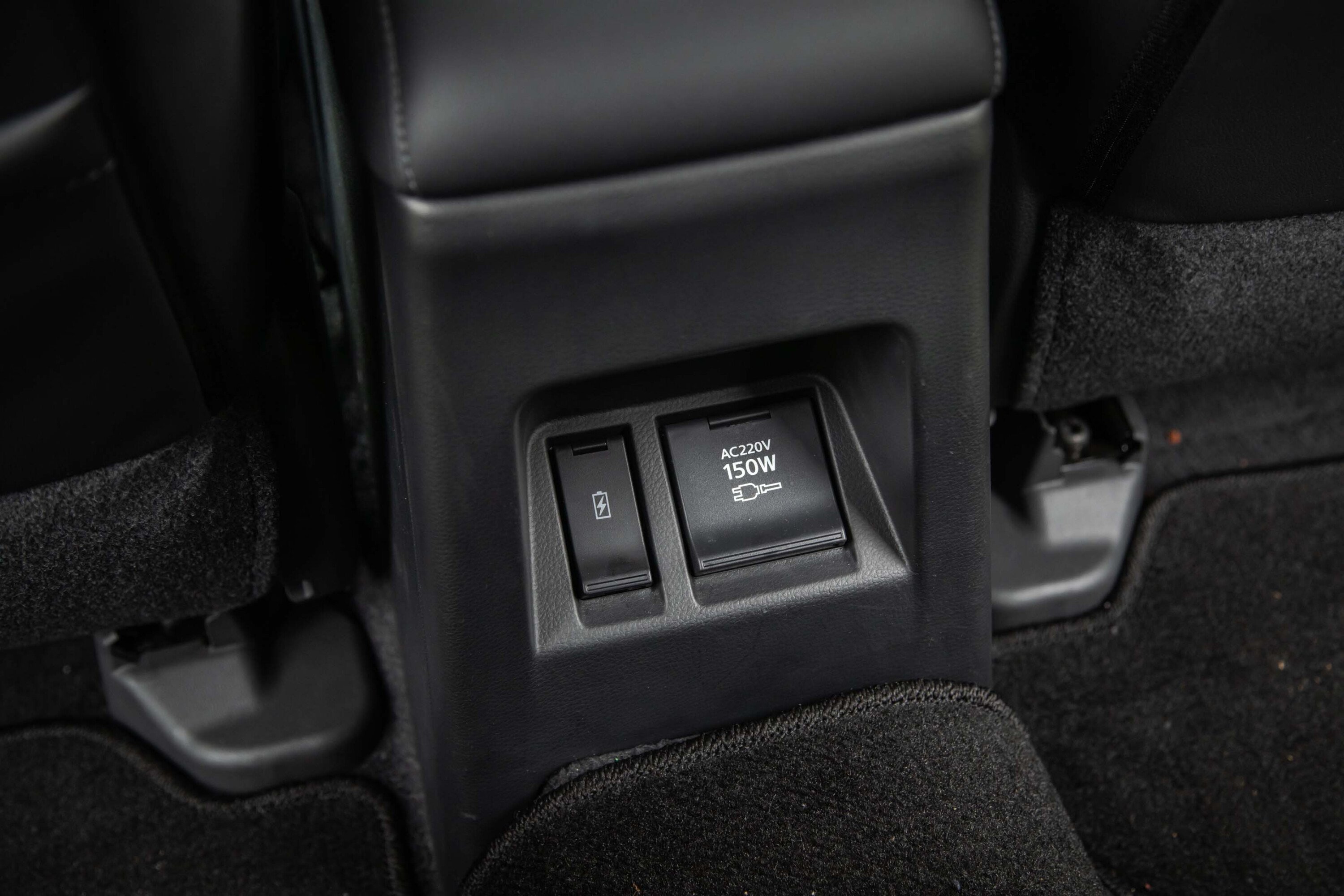
The GLS Deluxe takes things a step further with:
| 2024 Mitsubishi Pajero Sport GLS Deluxe features | |
|---|---|
| Leather-appointed seats | Top-down parking camera view |
| Electric front seat adjustment | Steering wheel camera switch |
The next grade, Exceed, gets you those features plus:
| 2024 Mitsubishi Pajero Sport Exceed features | |
|---|---|
| 8.0-inch LCD digital instrument display | Remote Smartphone App |
| Heated front seats | Ultrasonic misacceleration mitigation system |
| 8-speaker audio system | Front parking sensors |
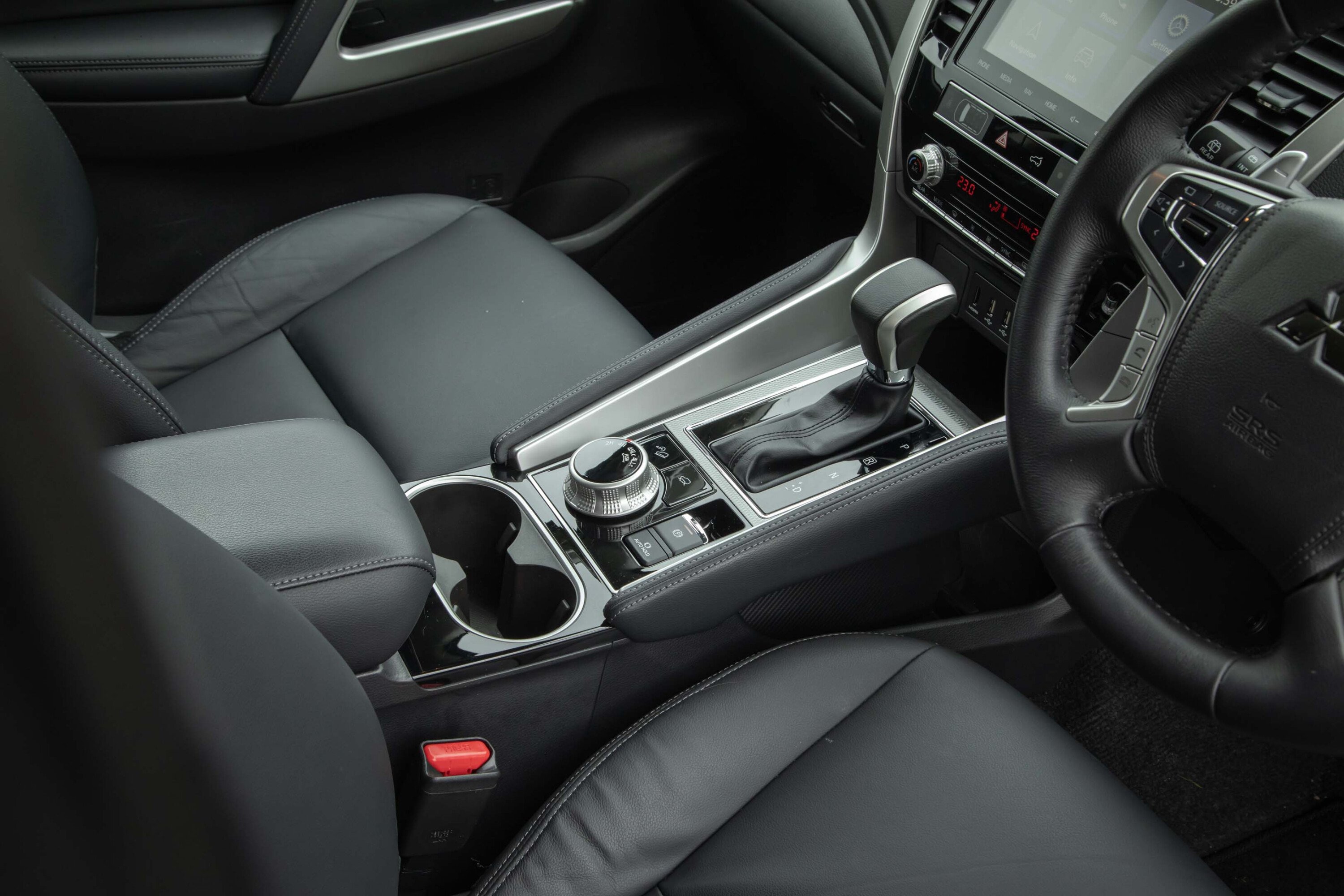
The GSR 4WD is the most expensive version and has the same power, 8.0-inch touchscreen and all-wheel-drive, but adds:
| 2024 Mitsubishi Pajero Sport GSR 4WD features | |
|---|---|
| Black alloy wheels | Black headlight garnish |
| Black rear spoiler | Black roof rails |
| Black front bumper garnish | Two-tone roof u2013 black |
| Black rear bumper garnish | Pajero Sport bonnet emblem |
| Black radiator grille | GSR tailgate badge |
Compared to 2WD, GLX and GLS 4WD models also add:
| 2024 Mitsubishi Pajero Sport 4WD additions |
|---|
| Super Select II 4WD system |
| Selectable off-road modes |
| Paddle shifters |
| Hill descent control |
| Rear differential lock (from GLS and up) |
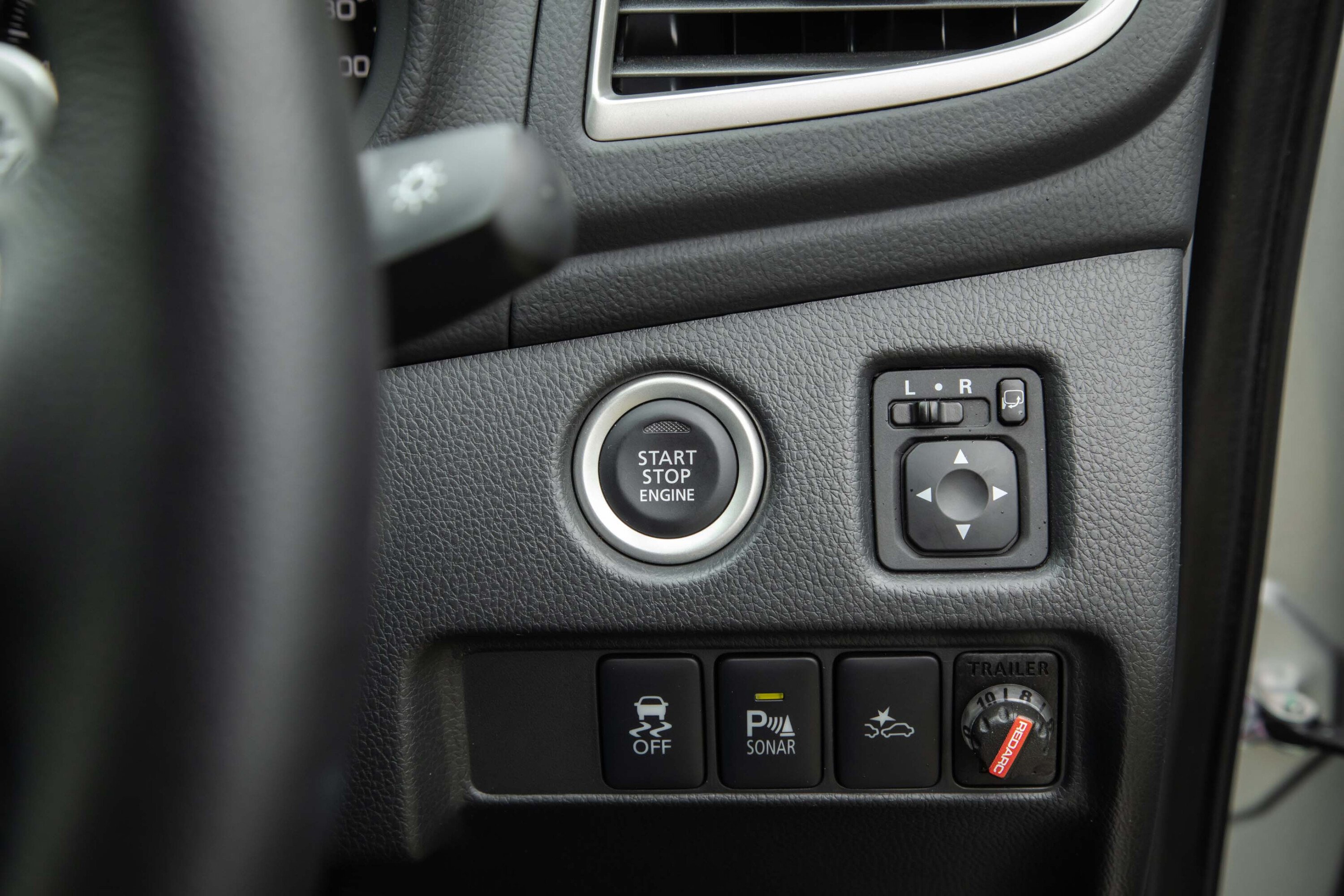
How safe is the Mitsubishi Pajero Sport?
The Pajero Sport was awarded a maximum five-star ANCAP rating under less strict criteria in 2015, and its score has expired. Thus, vehicles built from Jan 1 2023 are UNRATED.
Standard equipment on the GLS includes forward auto emergency braking (AEB) with pedestrian detection, adaptive cruise control, front and rear parking sensors, a low-resolution 360-degree monitor and a reversing camera.
To get all the safety gear you’ll need to move up to the Pajero Sport Exceed ($60,690 before on-road costs) with its standard blind-spot monitoring and rear cross-traffic alert.
During testing, we have noted decent ABS and ESC tunes on both tarmac and dirt. The Pajero Sport’s high-set driving position and upright A-pillars provide great visibility in urban environments.
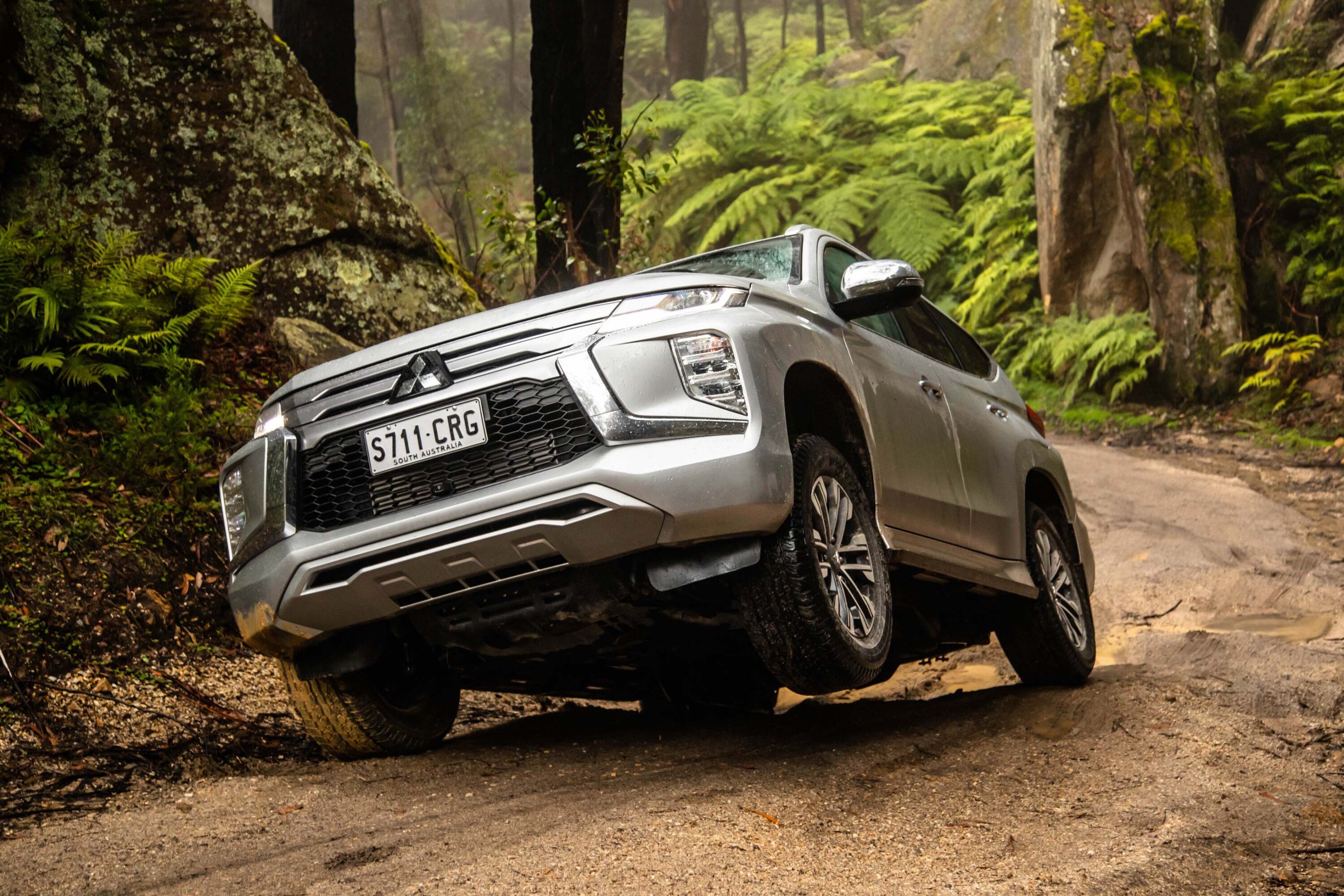
How comfortable and practical is the Mitsubishi Pajero Sport?
Despite feeling dated in certain areas, the Pajero Sport’s interior is a comfortable place for a family voyage.
The undersized eight-inch touchscreen now feels a generation old, with the system itself slow to boot by modern standards.
Embedded TomTom navigation is provided but with the inclusion of Apple CarPlay and Android Auto, we’re hard-pressed to know if anyone will ever use it. Still, the most commonly used applications and functions are easy to find.
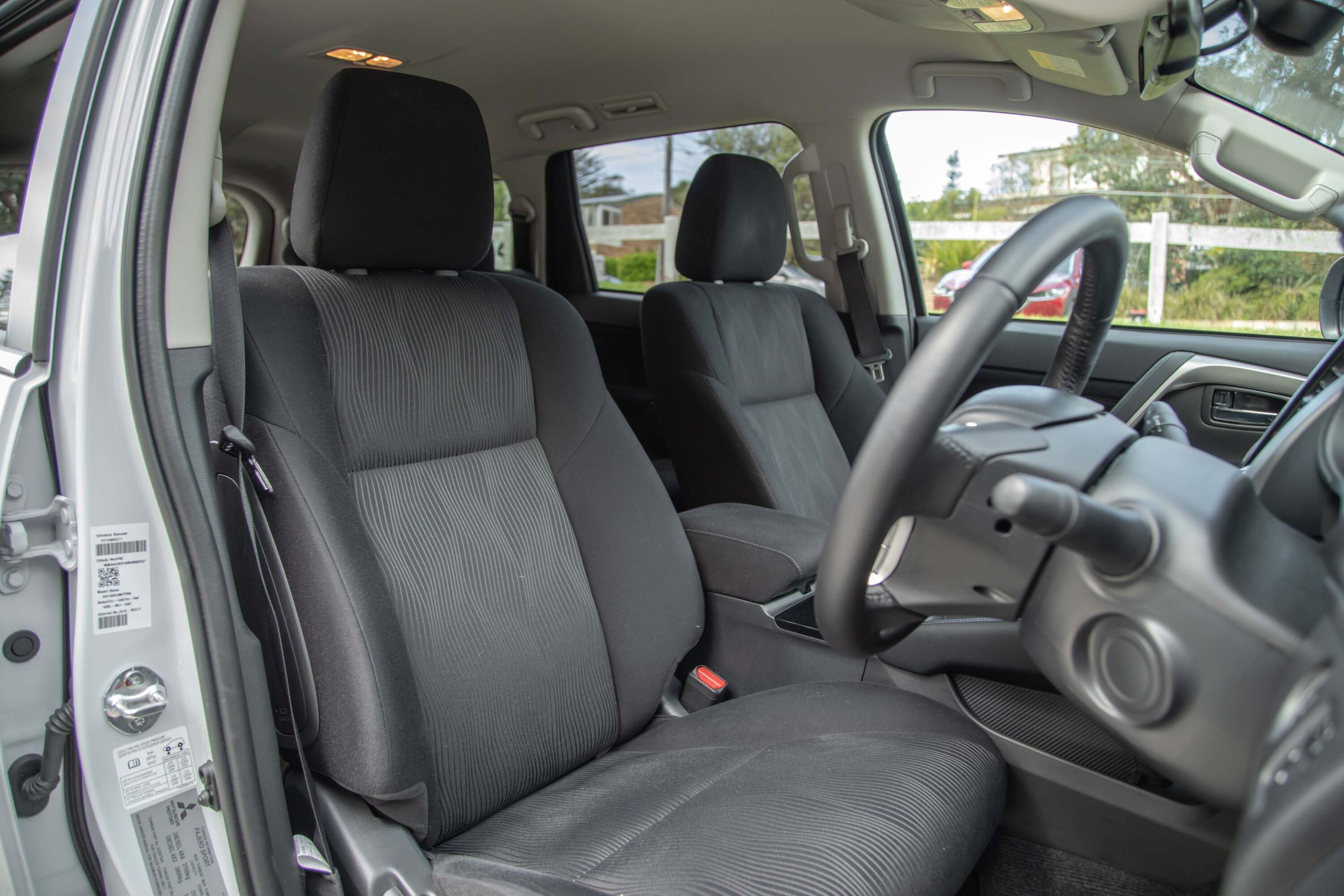
“It’s actually in third-row space and packaging that the Pajero Sport really surprises.”
We don’t love the on-screen touch buttons – instead of ‘actual’ buttons and dials – for things like volume control. Not only is there a delay when pressing the buttons, but the screen doesn’t take long to get filthy with fingerprints.
An updated user interface, a bigger screen, and buttons and dials would make a world of difference.
Front passengers are greeted with two USB points, one HDMI point and a 12-volt outlet. Grab handles for the driver and front and rear passengers make entry and exit easy for weary travellers, and, unlike the base-spec GLX, the GLS comes with dual-zone climate control.
In the GLS Deluxe cabin, there’s a thin veneer of plushness that separates it from a Triton. The leather-appointed seats do have lumbar adjustment but aren’t the last word in comfort. Storage isn’t particularly clever, with no great spot to leave a large smartphone. Door bins are still well-sized, and there’s decent covered storage beneath the armrest.
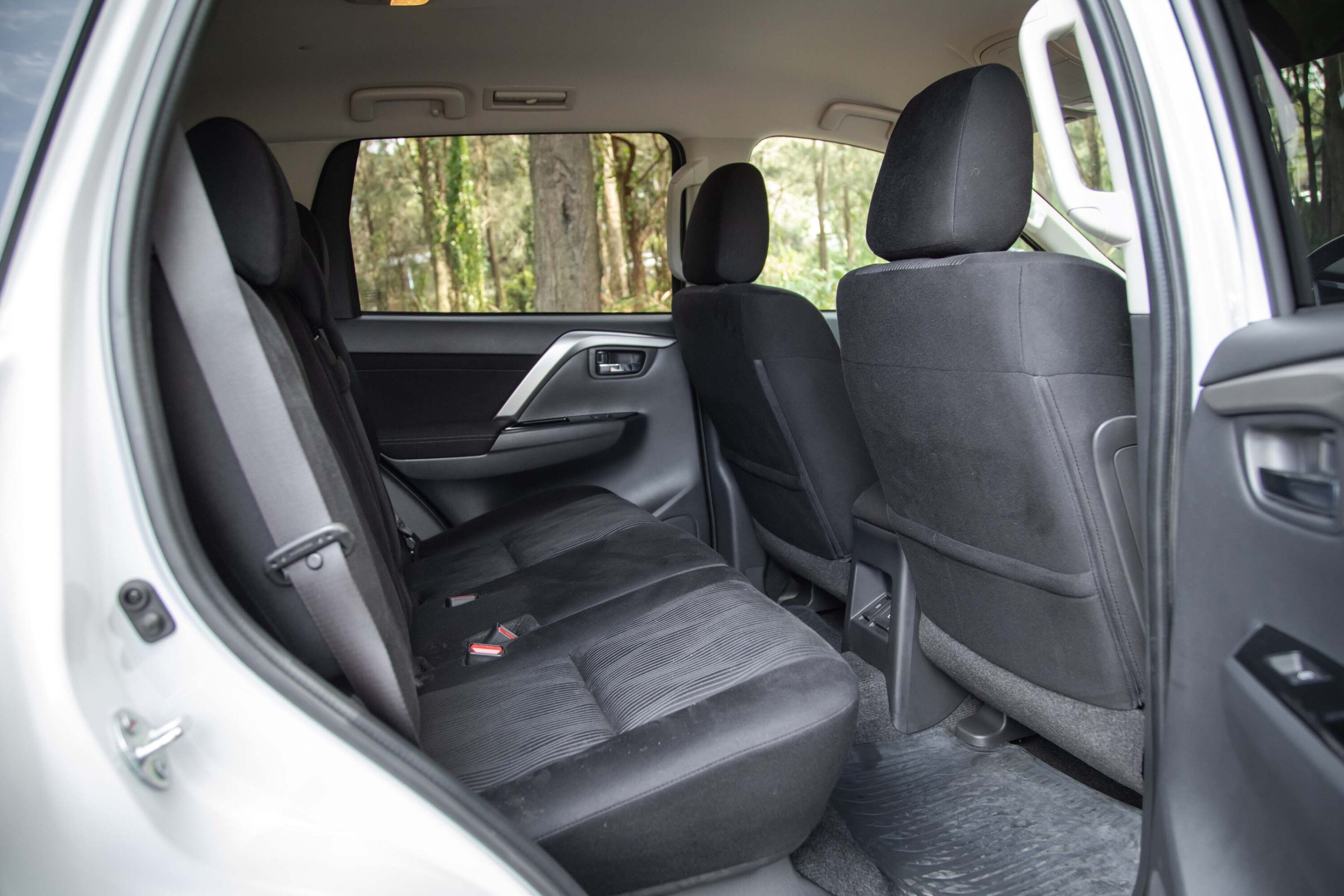
Moving into the second row, the Pajero Sport is limited in its flexibility by not having a sliding bench.
The backrest is adjustable, though not to a great degree. Space is also tight; headroom isn’t great and the body-on-frame construction means the floor is quite high.
The Pajero Sport’s roof-mounted vents are adjustable so will keep second-row riders cool, though there isn’t a separate climate zone. USB-A charging points and a 220V household-style socket provide plenty of charging flexibility. The three-pin socket is great for camping applications, too.
It’s actually in third-row space and packaging that the Pajero Sport really surprises. Despite being set a little higher than the second row, there’s still reasonable headroom twinned with an excellent view out – there are even roof-mounted air vents and two cup holders on each side. The tumble-forward second row makes for very easy ingress.
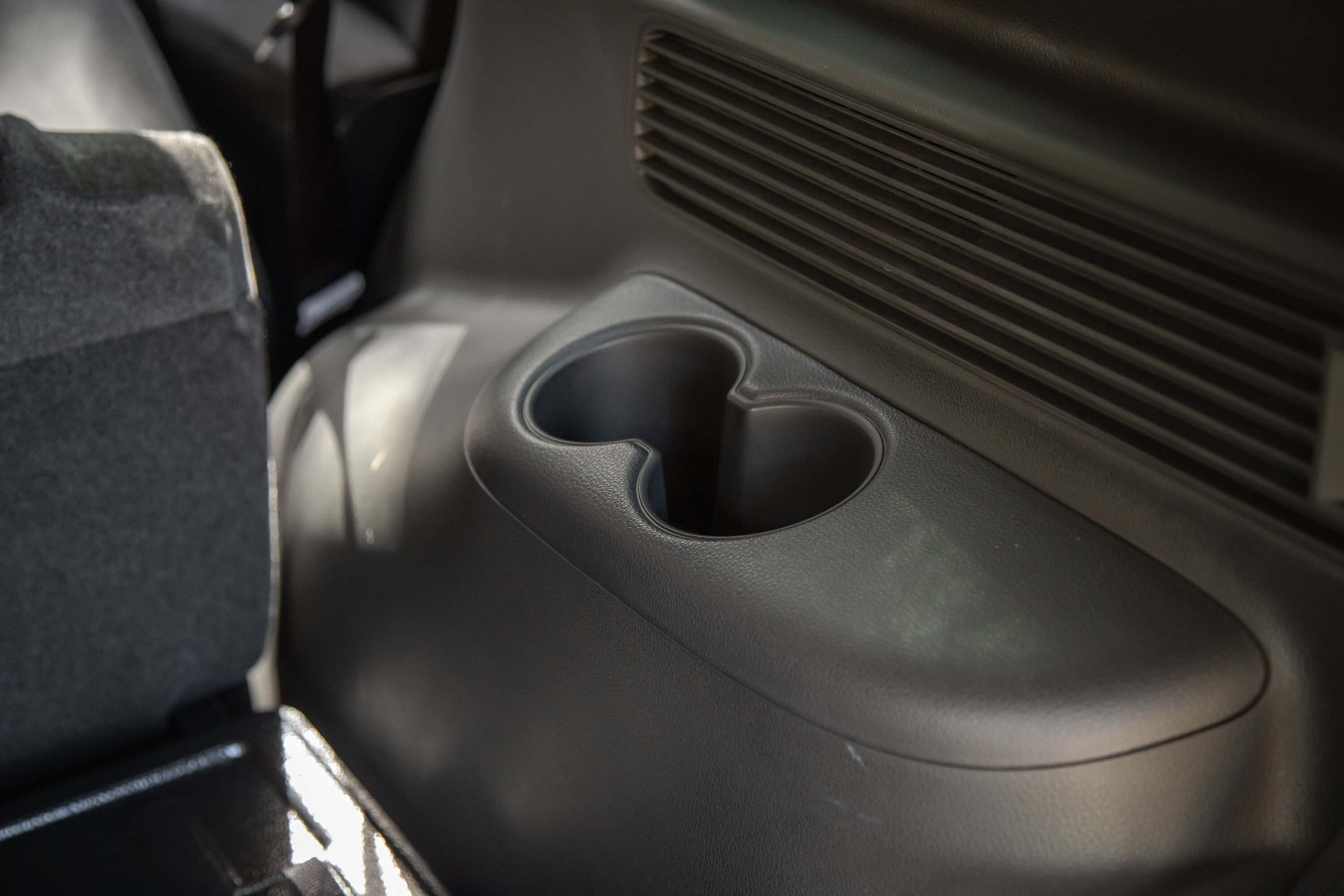
How much boot space does the Mitsubishi Pajero Sport offer?
With three rows upright, the Pajero Sport has a 131-litre boot. With two rows up – in five-seater mode – that swells to 502 litres. With both rear rows folded, there’s a huge 1488 litres of luggage space.
The GLS model also features a handy rear floor storage compartment.
All Pajero Sport variants package a full-size spare tyre under the vehicle; great peace of mind for touring.
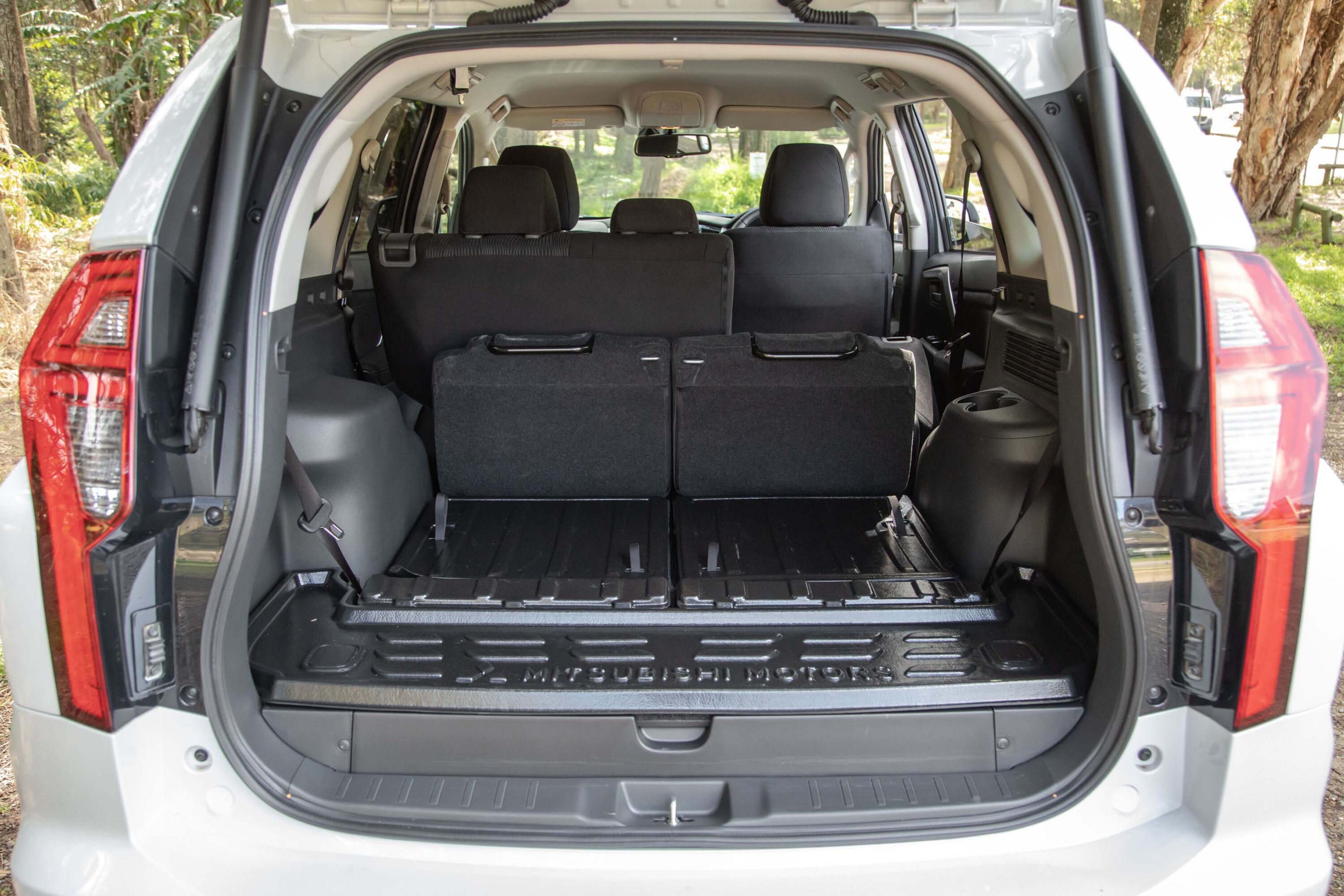
I like driving, will I enjoy this car?
The Pajero Sport is nice and easy to drive, even if it’s not as polished on-road as something like a Mitsubishi Outlander.
With a modest 133kW and 430Nm on tap, there’s no disguising the fact Mitsubishi’s 2.4-litre MIVEC DID turbo-diesel engine seems to work hard to get the two-tonne Pajero Sport up to speed.
It’s also not the quietest nor smoothest in its operation, but once at 100 clicks on the freeway, this burly SUV is a pleasant place to sit.
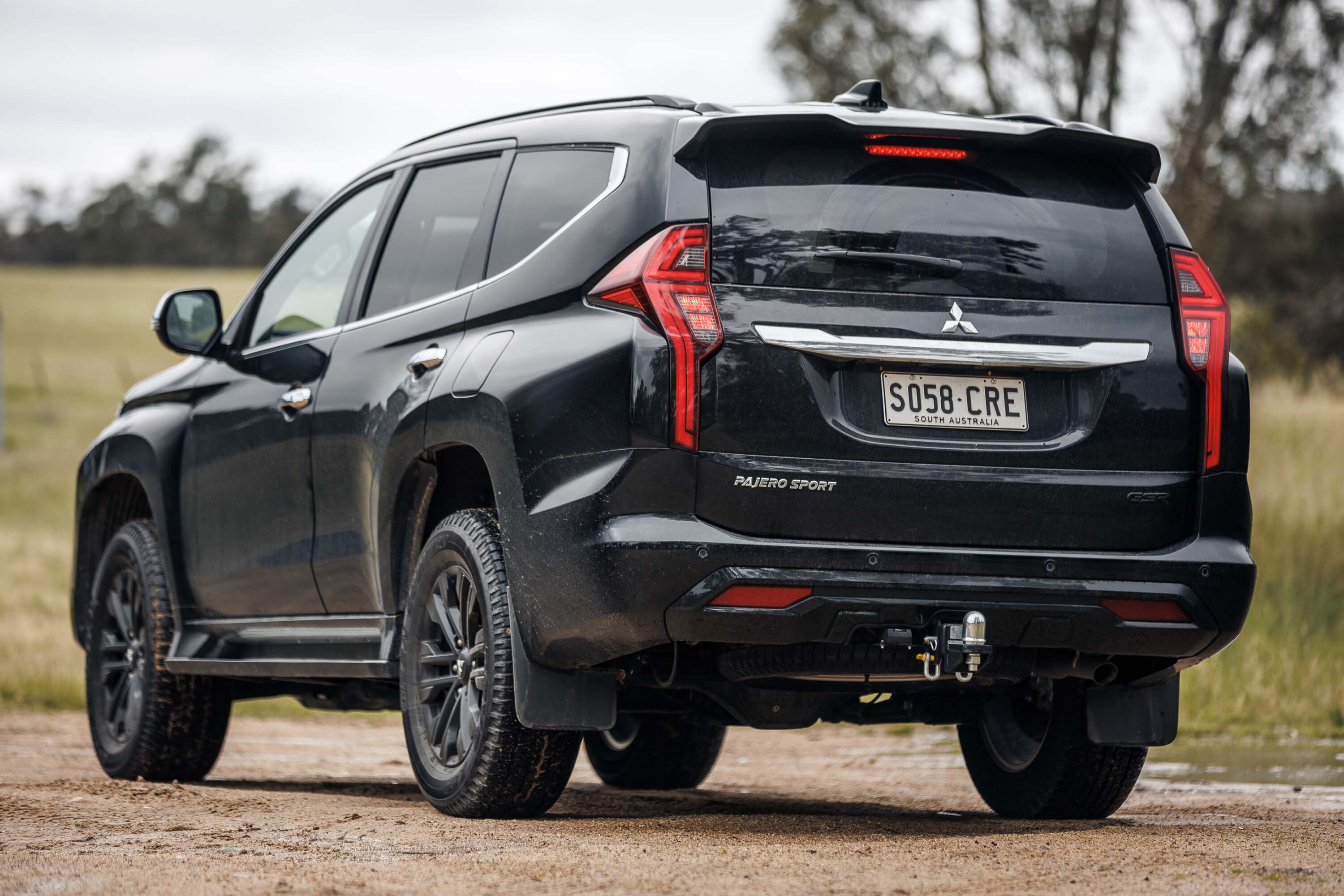
Like others in this category, the Pajero Sport utilises a ladder-frame chassis derived from its ute-based sibling, but it replaces the leaf springs found at the rear of the Triton with coils. The front end shares the same coil design. This translates to a much smoother on-road composure than the Triton ute.
Its eight-speed transmission is well-calibrated, with up- and down-changes fairly smooth by large SUV standards. The GLS 4WD is equipped with paddle shifters, which is convenient for when bitumen turns to dirt.
The Pajero Sport is comfortable enough, but if you’re not doing any towing, only carrying two to four passengers most of the time, and don’t care for off-roading, there are much nicer and more comfortable options available for around the same price.
If any of the terms in this section have left you scratching your head, these articles will help bring you up to speed!
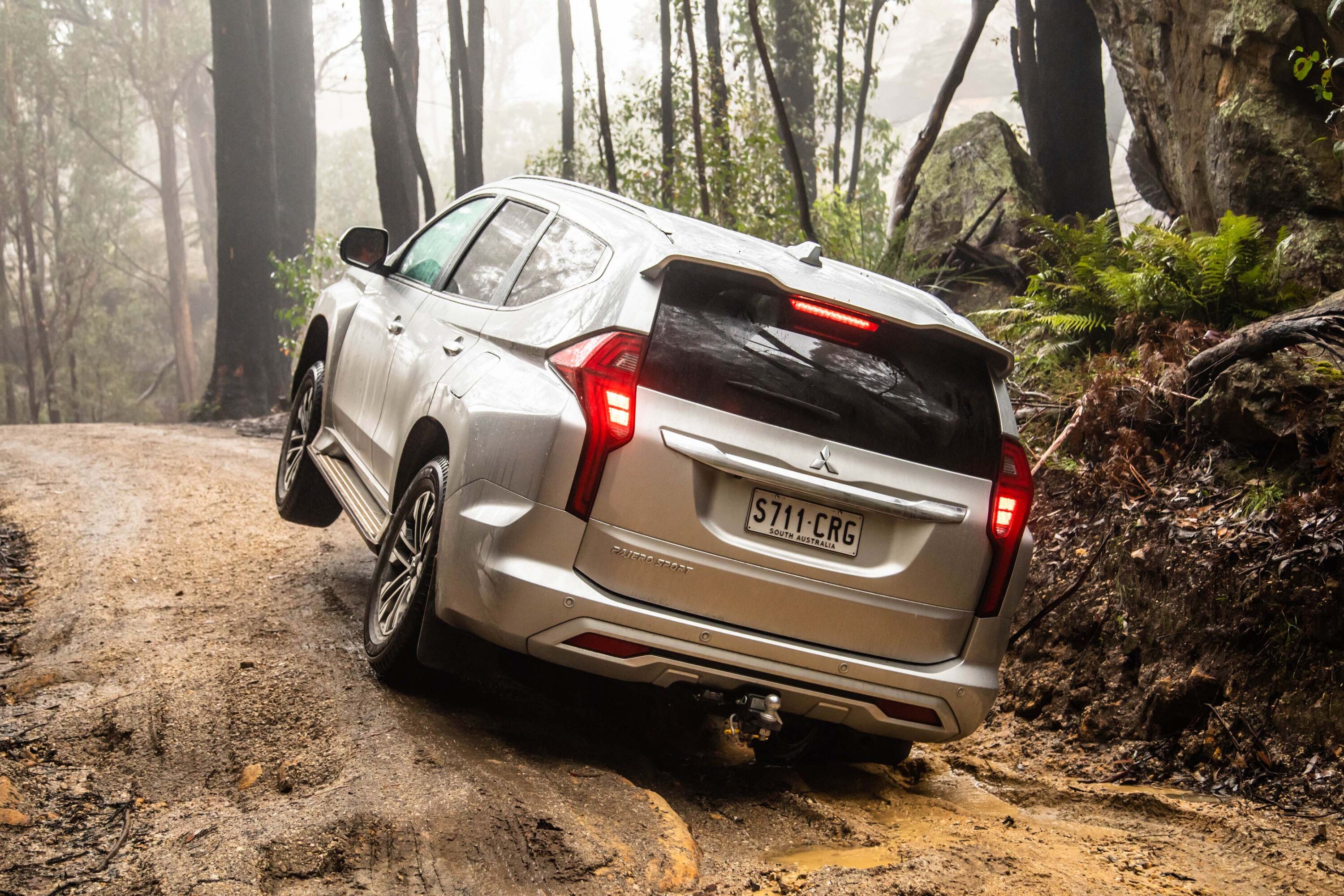
- What is a Powertrain or Drivetrain?
- Power vs torque
- Car suspension explained
- Automatic transmissions (‘gearboxes’) explained
- Chassis control systems explained
- Car vs Ute vs SUV: How the vehicle you buy should guide the way you drive
By official fuel efficiency ratings, all models in the Pajero Sport range return 8.0L/100km in the ADR 81/02 combined cycle.
During our real-world testing of a 4WD model, the Pajero Sport’s diesel engine returned an economical 8.8L/100km over 350 kilometres.
The Pajero Sport has a 68-litre fuel tank, giving it a theoretical range of around 800km.
If air pollution is a concern for you, petrol alternatives might be worth a look – such as the Mitsubishi Outlander – as petrol engines release fewer toxic exhaust particulates into the atmosphere.
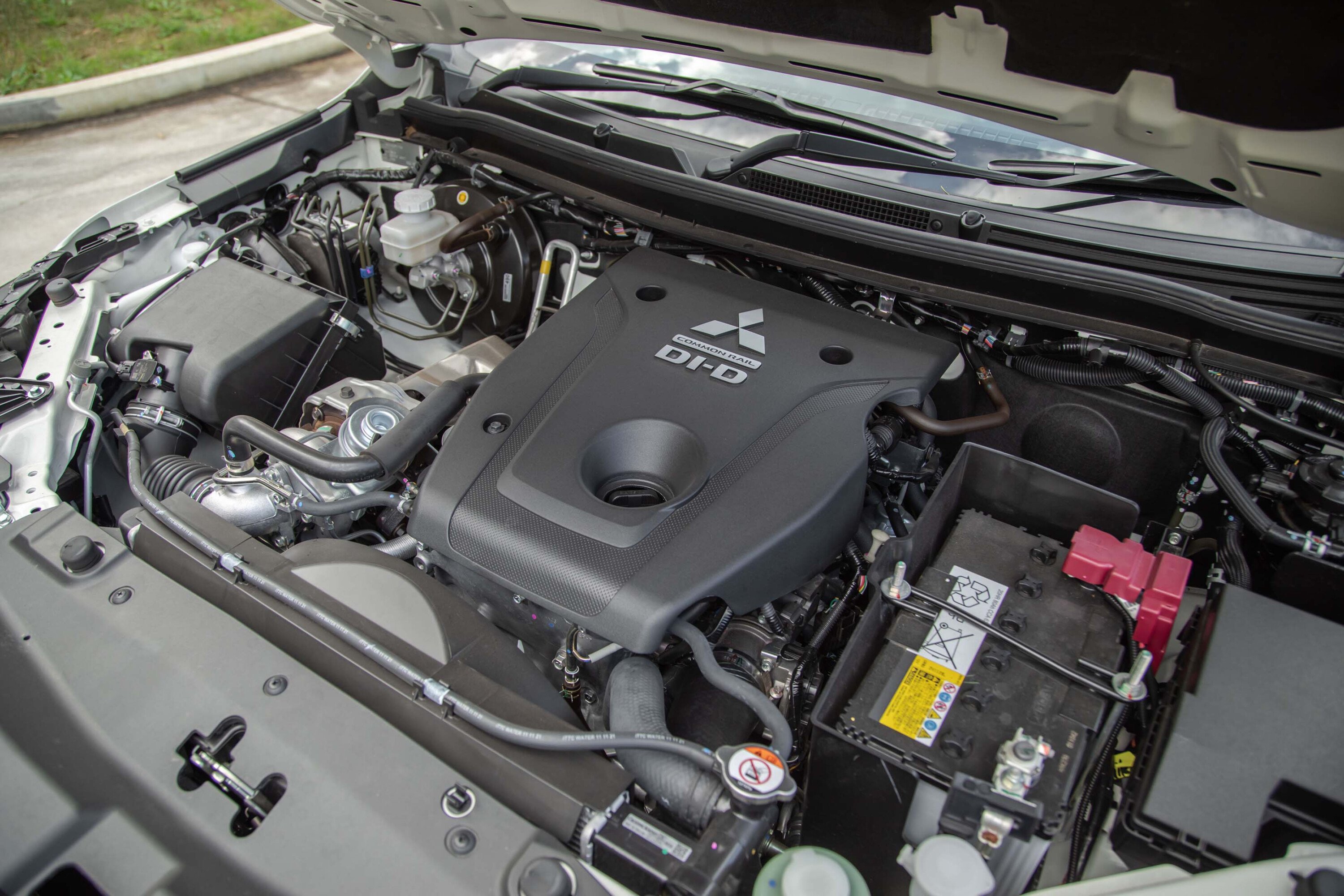
What is the Mitsubishi Pajero Sport’s towing capacity?
Four-wheel-drive models can tow up to 3100kg braked and 750kg unbraked.
For 2WD models, it’s 3000kg braked and 750kg unbraked. The maximum tow ball load is 300kg for 2WD models and 310kg for 4WD.
How long is the warranty and what are the Mitsubishi Pajero Sport’s servicing costs?
The Pajero Sport is covered by Mitsubishi’s 10-year/200,000km Diamond Advantage warranty.
It’s the longest in time terms across the industry but does stipulate that the vehicles are serviced at a main dealer. Otherwise, the duration reverts to a more industry-standard five years.
The Pajero Sport’s service intervals are 12 months or 15,000km, whichever comes first. It will cost $2495 to maintain over five years, climbing to $5990 for 10 years with the most major $999 scheduled service coming in the eighth year of ownership.
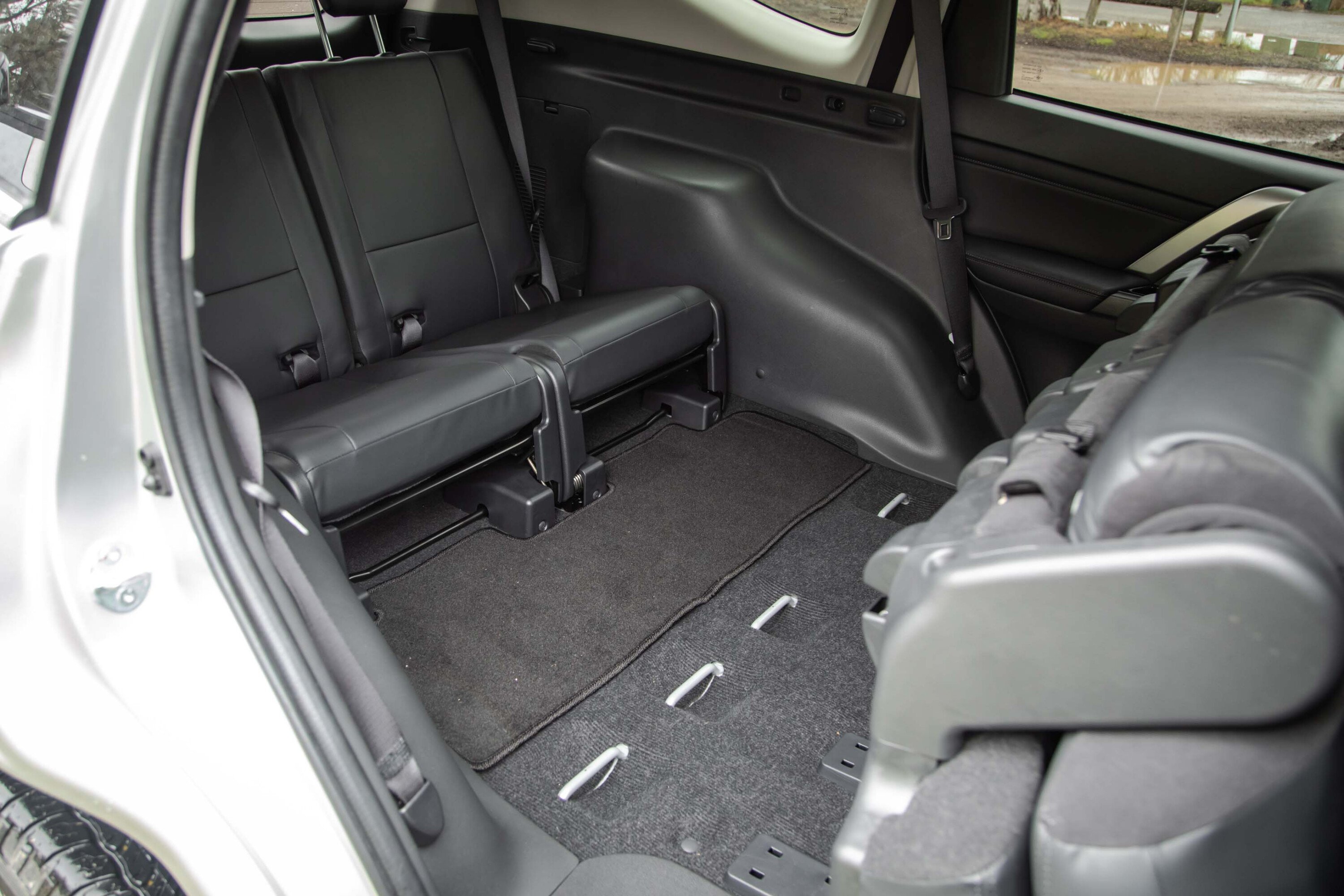
Which version of the Mitsubishi Pajero Sport does 4X4 Australia recommend?
The GLS 4WD with the $1500 optional Deluxe Pack seems like a smart buy, but you may as well stump up the extra few grand for the Exceed. It’s worth it for the seat heaters alone. Spoil yourself – you deserve it.
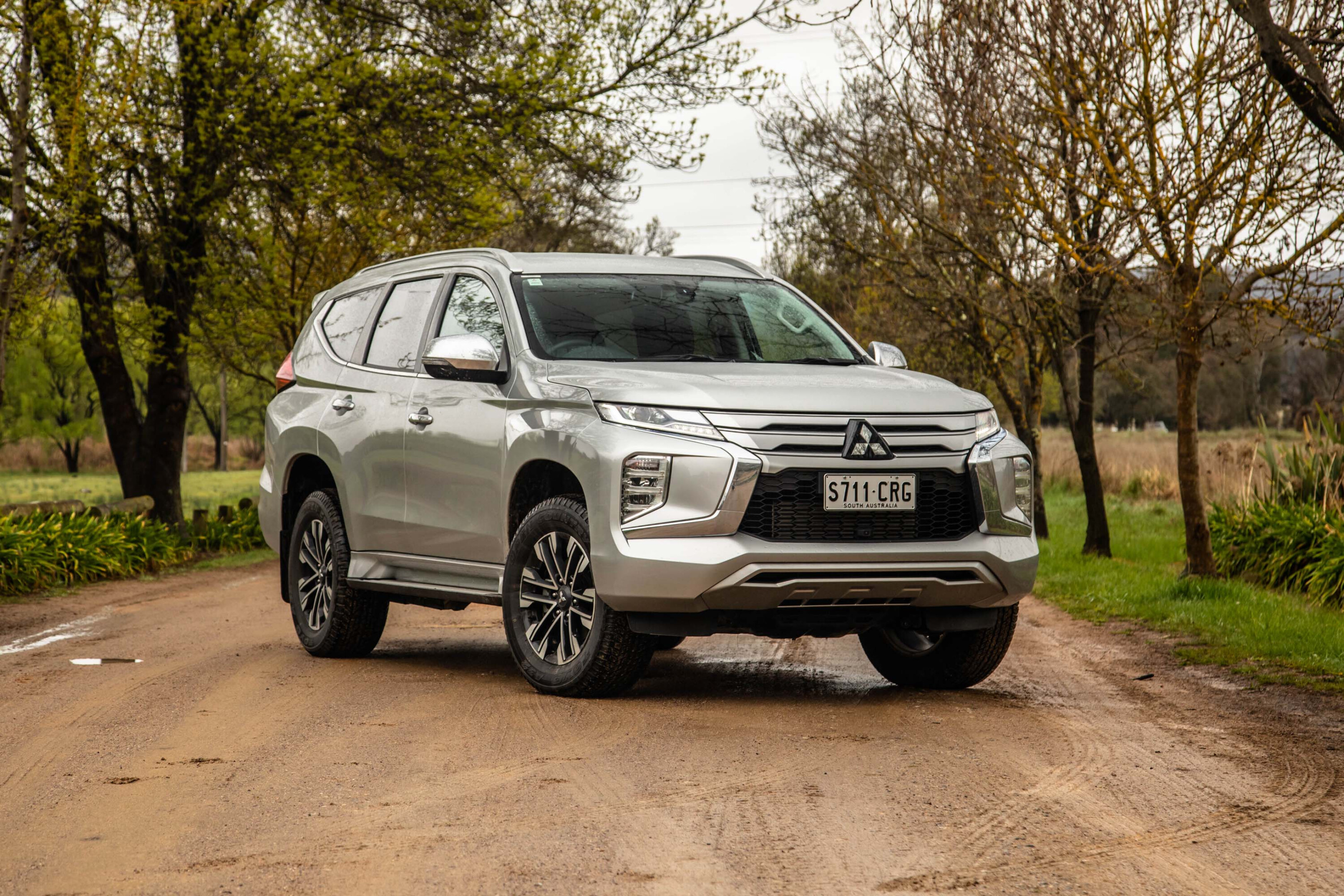
What are the Mitsubishi Pajero Sport’s key rivals?
Score breakdown
Things we like
- A simple, honest motor car
- Plenty of space inside
- Very effective off-road
- Impressive 10-year warranty
Not so much
- Engine not the most refined
- Can drive a bit like a truck
- Interior feels old
- Lacks some safety aids

